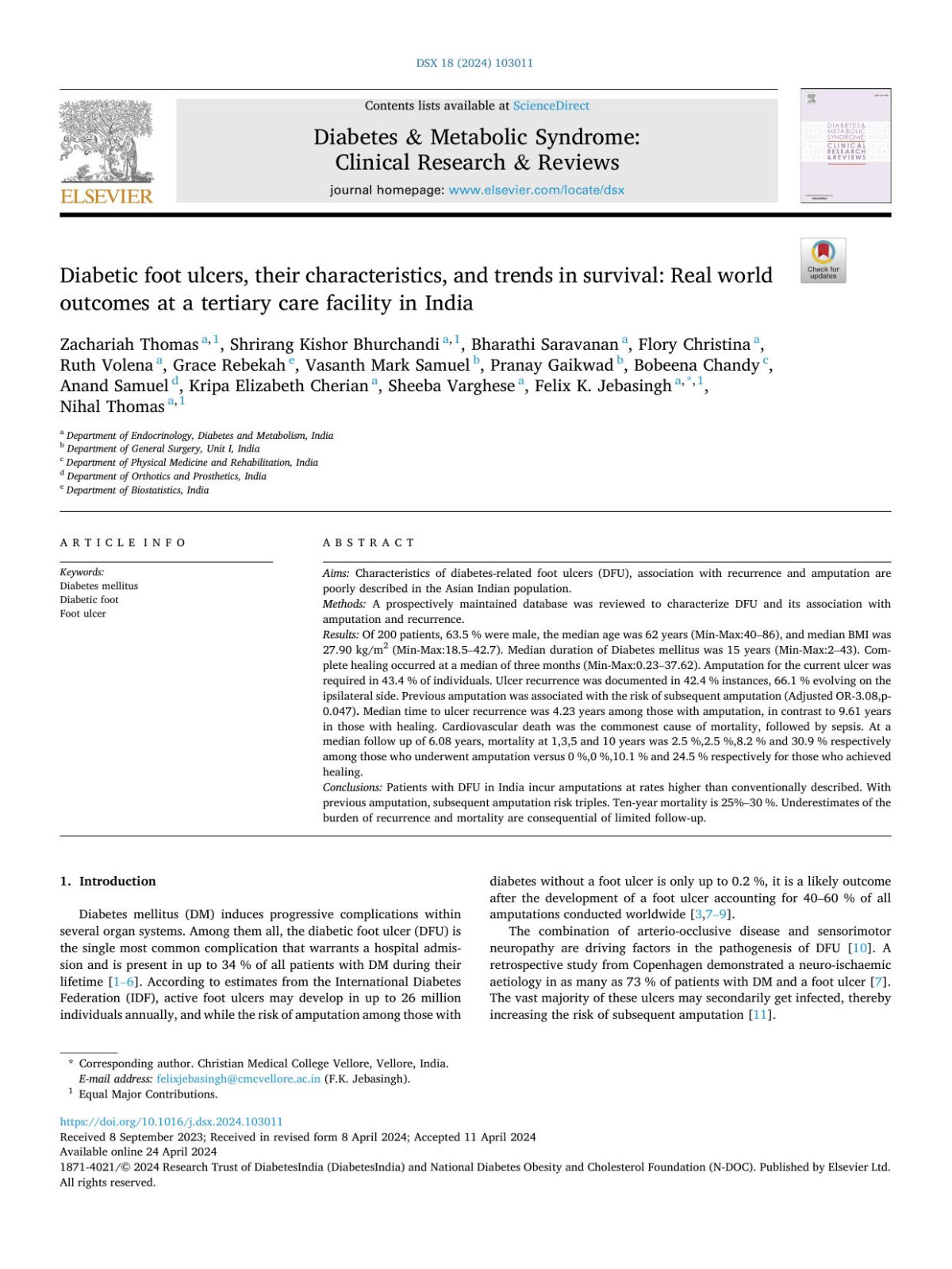

Most ebook files are in PDF format, so you can easily read them using various software such as Foxit Reader or directly on the Google Chrome browser.
Some ebook files are released by publishers in other formats such as .awz, .mobi, .epub, .fb2, etc. You may need to install specific software to read these formats on mobile/PC, such as Calibre.
Please read the tutorial at this link: https://ebookbell.com/faq
We offer FREE conversion to the popular formats you request; however, this may take some time. Therefore, right after payment, please email us, and we will try to provide the service as quickly as possible.
For some exceptional file formats or broken links (if any), please refrain from opening any disputes. Instead, email us first, and we will try to assist within a maximum of 6 hours.
EbookBell Team

0.0
0 reviewsMethods: A prospectively maintained database was reviewed to characterize DFU and its association with
amputation and recurrence.
Results: Of 200 patients, 63.5 % were male, the median age was 62 years (Min-Max:40–86), and median BMI was
27.90 kg/m2 (Min-Max:18.5–42.7). Median duration of Diabetes mellitus was 15 years (Min-Max:2–43). Complete healing occurred at a median of three months (Min-Max:0.23–37.62). Amputation for the current ulcer was
required in 43.4 % of individuals. Ulcer recurrence was documented in 42.4 % instances, 66.1 % evolving on the
ipsilateral side. Previous amputation was associated with the risk of subsequent amputation (Adjusted OR-3.08,p-
0.047). Median time to ulcer recurrence was 4.23 years among those with amputation, in contrast to 9.61 years
in those with healing. Cardiovascular death was the commonest cause of mortality, followed by sepsis. At a
median follow up of 6.08 years, mortality at 1,3,5 and 10 years was 2.5 %,2.5 %,8.2 % and 30.9 % respectively
among those who underwent amputation versus 0 %,0 %,10.1 % and 24.5 % respectively for those who achieved
healing.
Conclusions: Patients with DFU in India incur amputations at rates higher than conventionally described. With
previous amputation, subsequent amputation risk triples. Ten-year mortality is 25%–30 %. Underestimates of the
burden of recurrence and mortality are consequential of limited follow-up